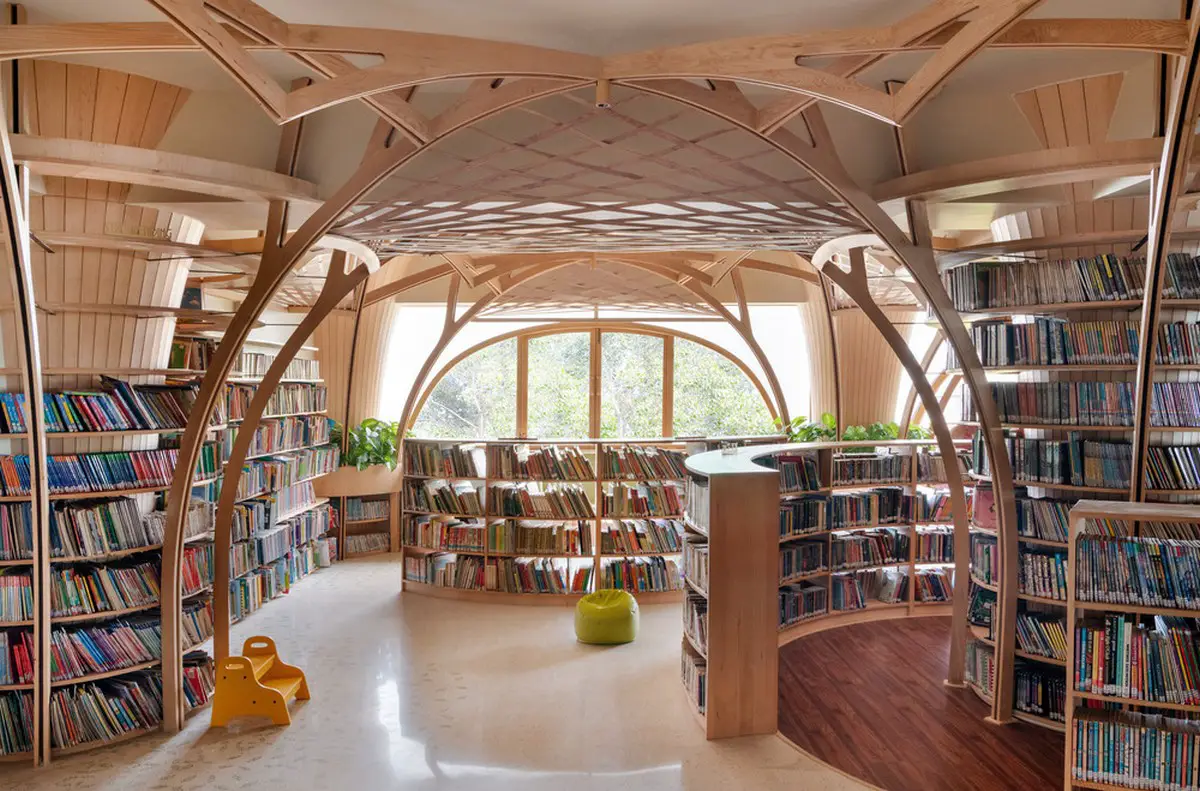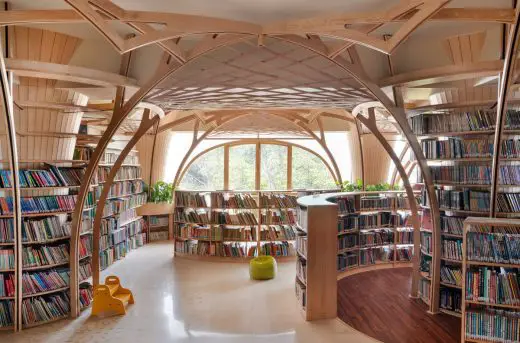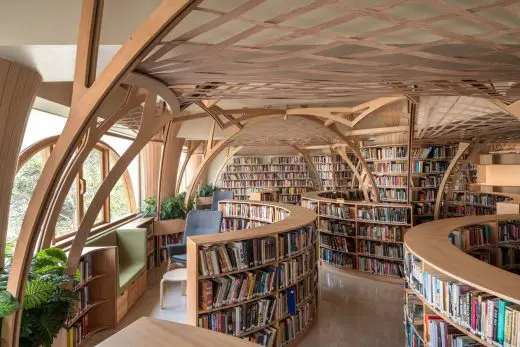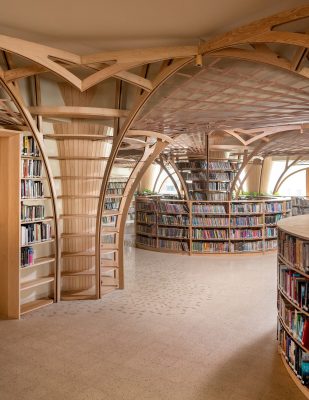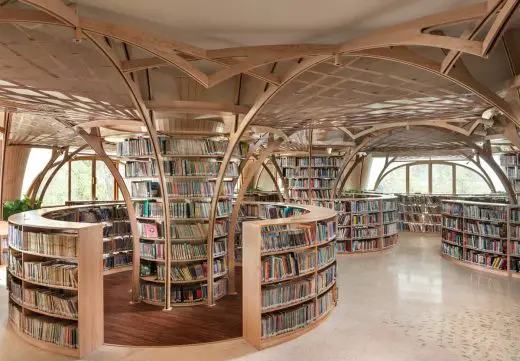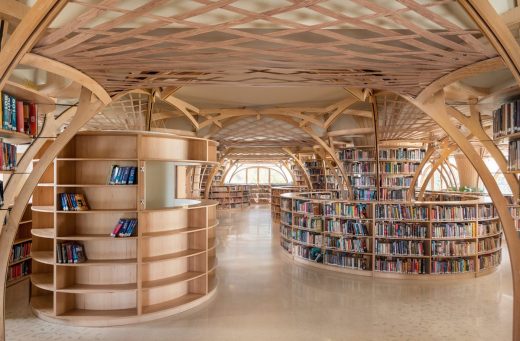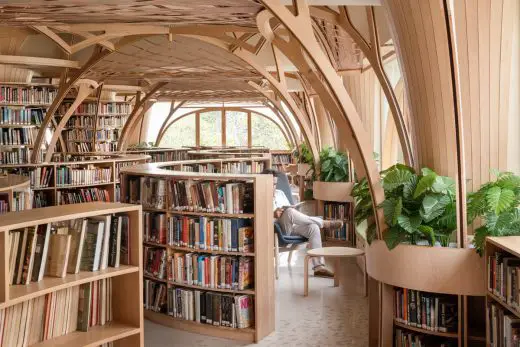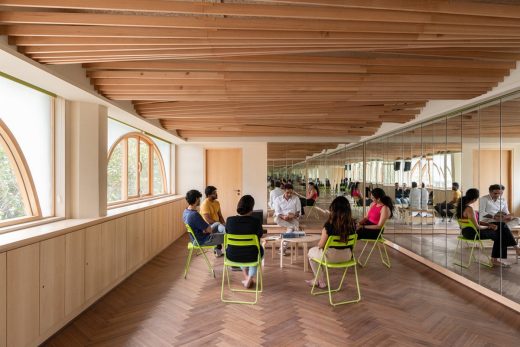Forest of Knowledge Mumbai building, Indian library design, Interior architecture photos
Forest of Knowledge in Mumbai
14 August 2024
Architecture: studio HINGE
Location: Mumbai, India
Photos © Suryan//Dang
Forest of Knowledge, India
The design for the renovation of the library at the Cricket Club of India, Mumbai, is informed by research into what a library in our digital times can be. Conceived during the Covid lockdown, and opened to members in January 2023, it goes beyond books to propose the library as a house of knowledge, providing opportunity for people to come together and learn from each other. On a formal level, the design draws from nature, in particular the notion of sitting under a tree with a book, and borrows from the beautiful tree canopy over the adjacent street.
Context
The Cricket Club of India is an exclusive members club from Bombay’s colonial past, with an understated Art Deco building from 1938 as its main pavilion overlooking a historic cricket stadium.
Studio HINGE was originally invited to design the library at a different location within the club in a standalone building fronted by a storage yard. The earlier scheme featured a permeable façade of books in glass revolving doors, envisioning the yard converted to landscaped gardens with semi-covered reading areas. However, this design was never realized, and the library was relocated to the fourth floor of the administrative building. Despite this challenging location, the new design seeks to retain some of the original ideas. India experienced one of the harshest and most sudden Covid lockdowns in the world. A lot of the design of the library was developed during this time, when people were yearning to meet and share ideas in person again more than ever.
The temporary library had no washroom facilities or separate admin area. It had long lightless corridors and bookshelves stacked high in front of windows, creating claustrophobic spaces with natural light blocked out. This, coupled with shrinking attention spans and the fact that people increasingly read on digital devices rather than books, meant that fewer people than ever visited the space. Those that did came to collect or return books and rarely stayed to read.
Design intent
The plan of the library is laid out like a formal garden, led primarily by considerations of natural light and structural grid. A “boulevard” references the foliage-canopied street outside.
Existing concrete columns are reimagined as trees, with circular bookshelves in Western Hemlock, supported on arching branches which reference the geometry of the pavilion’s colonnade along the cricket ground. The branches are of 16mm thick timber clad over 20mm square hollow box sections in steel (these also serve as conduits, avoiding the need for a suspended ceiling). The branches intertwine overhead, forming intricately woven meshes below the beams, recreating the sense of walking under trees with dappled light filtering through canopies above. Custom terrazzo flooring tiles with chips of marble and green glass create abstract patterns of scattered leaves.
Around the central trees are freestanding bookshelves in circular hedge-like arrangements. Bibliophiles browse within the hedges, before heading to the lounge chairs and sofa benches by the windows for longer reads.
The architects proposed the addition of a multipurpose space by refurbishing an adjacent underutilized Zumba studio for programming related to reading and learning. This includes film screenings, book clubs, new book launches, author readings, and workshops for children and adults. The redesign allows the space to revert back to a dance studio when needed. Engineered oak flooring, mirrored storage cabinets for non-display books and stacking furniture, and a large screen hidden behind folding doors allow the space to used flexibly between disparate functions. A ceiling of undulating timber slats speaks of movement and dance, whilst concealing MEP overhead.
By providing a platform for community activities that bring people together, this additional space has proven the key to activating and revitalizing the library. Post-occupancy surveys have shown significant increase in footfall, particularly amongst children.
Sustainable & inclusive design
All bookshelves not along walls are lower than 1.2m in height. This allows maximum natural light to permeate and for adults to have an unobstructed view whilst standing, while creating semi-private nooks to sit and read within. For children, the design provides a very different perception, as from their vantage the space between the circular bookshelves is playful, almost labyrinthine. The entire space is accessible by elevator and is step-free.
The principal material used for the library is timber, with the windows in yellow cedar and the furniture in western hemlock. In India, it is very difficult to find native species which are sustainably harvested, so Canadian timber from FSC sources was used.
studio HINGE enlarged the windows and decluttered the space in front of them, besides keeping a large proportion of them openable. This achieves an increase in both natural light and ventilation across two facades, reducing the reliance of the library upon artificial light and mechanical ventilation. The enlarged windows face east and north, avoiding the harsh glare of the south west.
Conclusion
The Cricket Club of India’s new library emerges as a contemporary, inclusive, and environmentally conscious space. Merging nature-inspired design, people-centric programming, and sustainable practices, the library transcends its traditional role, becoming a vibrant hub for learning, interaction, and community engagement.
Forest of Knowledge in Mumbai, India – Building Information
Architecture & Interior Designers: studio HINGE – https://www.studiohinge.in/profile/
Project Name: Forest of Knowledge
Location: Mumbai, India
Use: Library
Type: Cultural interior
Client: The Cricket Club of India
Completion Year: 2023
Built area: 420 sq.m./ 4500 sq.ft.
Project cost: approx. USD 330k
Architect: studio HINGE
Design Team: Pravir Sethi + Chintan Zalavadiya
Contact email: info@studiohinge.in
Lighting Design: studio TRACE/ Tripti Sahni: www.studiotrace.in
Project Management: CCI Projects Team
MEP: ARKK Consultants
Main Contractor: Timeless Interiors
Photography: Suryan//Dang
About studio HINGE
studio Hinge is an international award-winning architecture, interior, and furniture design firm founded by architect Pravir Sethi in 2014. The studio’s work spans cultural, institutional, leisure, residential, commercial, and retail projects, which have been published globally in over a dozen countries and have won recognition at highly coveted design awards around the world including:
– Dezeen Awards, London
– Architizer A+ Awards, NYC
– DNA Design Awards, Paris
– The Plan Awards, Italy
– Createurs Design Awards, Paris
A proclivity for detail informs the studio’s interest in furniture and product design. Being based in Mumbai, where space is at a premium, has fostered its curious approach and flexible design solutions. The outlook of the studio is firmly contemporary, with nods to historical and social context. The work is detail-and craft-orientated, yet often interpreted by cutting edge fabrication techniques. Pravir maintains a connection with academia, having been visiting faculty at leading schools in Mumbai including Istituto Marangoni, KRVIA (Kamala Raheja Vidyanidhi Institute for Architecture), BSSA (NMIMS’s Balwant Sheth School of Architecture), and at the Indian School of Design & Innovation.
Photographs © Suryan//Dang
Forest of Knowledge in Mumbai, India images / information received 140824 from v2com newswire
Location: Mumbai, India, South Asia
Mumbai Building Designs
Mumbai Architecture News, chronological:
Indian Architecture Designs – chronological list
Mumbai Railway Stations Renewal
Design: JDAP Design-Architecture-Planning, Architects
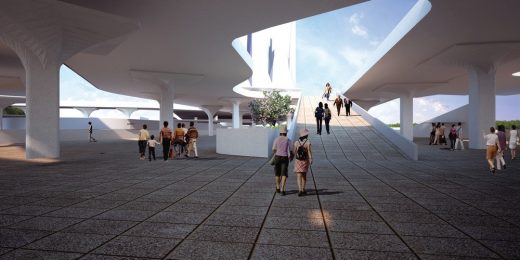
image courtesy of architects
Mumbai Railway Stations Renewal
Film City Tower – Bollywood ReImagined – Winning design – First prize:
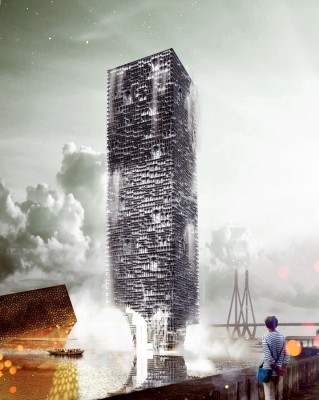
image courtesy of architects
Film City Tower Mumbai
Chhatrapti Shivaji International Airport Terminal 2 Building
Architects: Skimore, Owings & Merrill LLP – SOM
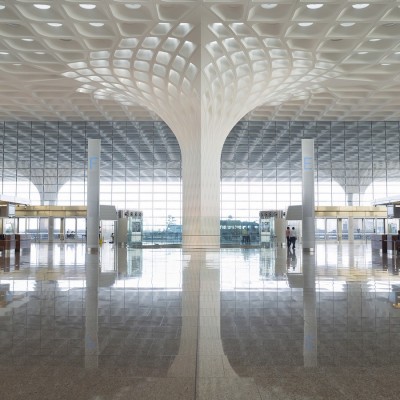
photograph © Robert Polidori
Chhatrapti Shivaji Airport Building in Mumbai
Mumbai City Museum Competition
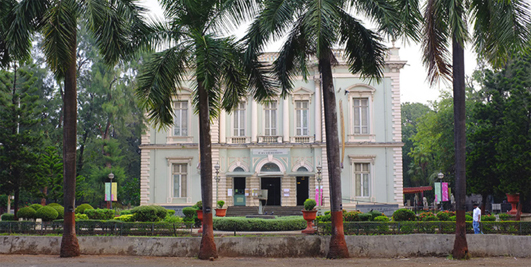
photograph from organisers
Mumbai City Museum Architecture Competition
Comments / photos for the Forest of Knowledge, Mumbai, India design by studio HINGE page welcome

